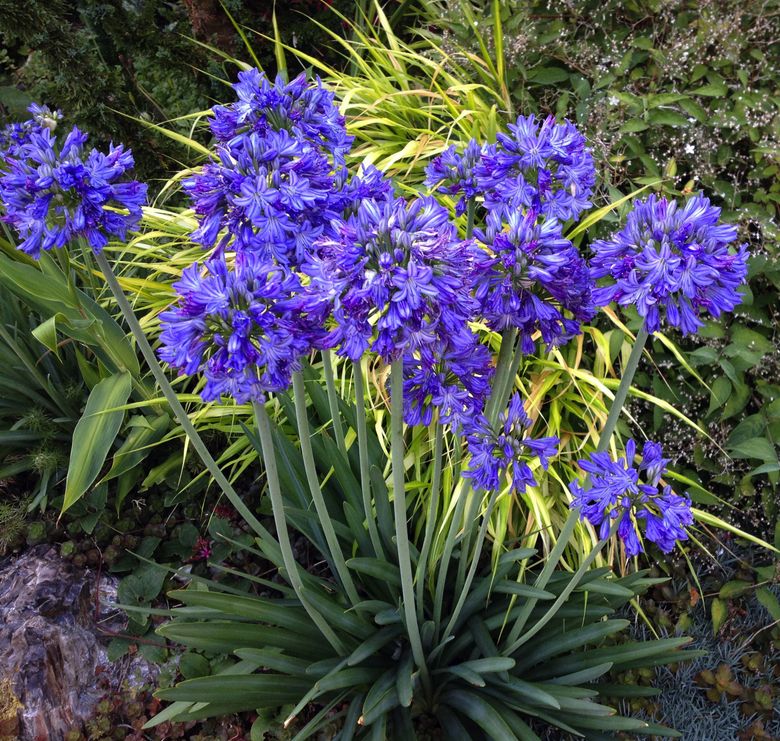Seasonal Agapanthus Care: Preparing for Winter and Summer season
Seasonal Agapanthus Care: Preparing for Winter and Summer season
Blog Article
Grasping the Art of Agapanthus Treatment: Important Steps for Healthy Growth and Lively Blooms
In the world of horticulture, the growing of agapanthus stands as a rewarding endeavor for those who look for to support these stylish flowering plants. From picking the right range to mastering pruning techniques, the journey in the direction of growing growing agapanthus plants is multifaceted and holds the essential to unlocking the full capacity of these botanical treasures.

Picking the Right Agapanthus Range

When picking the right Agapanthus variety for your garden, consider factors such as environment viability, bloom shade, and growth habit. Agapanthus, typically understood as Lily of the Nile or African lily, can be found in a variety of colors ranging from shades of blue and purple to white. Pick a flower color that matches your existing garden combination to create a harmonious landscape. Furthermore, take into consideration the environment in your region to make sure the Agapanthus range you pick can thrive in your certain conditions. Some ranges are extra tolerant of chilly temperatures, while others choose warmer environments. Understanding the development behavior of various Agapanthus ranges is critical for correct positioning within your yard. Some selections have a clumping growth practice, suitable for borders or containers, while others have a more dispersing nature, suitable for ground cover or mass plantings. By carefully evaluating these variables, you can pick the ideal Agapanthus variety to boost the charm of your yard.
Ideal Growing Conditions
Thinking about the optimum environmental requirements is crucial for successful Agapanthus growing. Agapanthus prospers in well-draining soil with a slightly acidic to neutral pH degree. When growing, choose an area that receives full sunshine to partial shade. In hotter climates, supplying some mid-day shade can avoid scorching of the fallen leaves. Agapanthus plants are sensitive to chilly temperatures and need to be protected from frost during winter season months.
To ensure healthy growth and dynamic flowers, plant Agapanthus light bulbs at a deepness of regarding 2-4 inches and space them 8-12 inches apart. Mulching around the base of the plants assists keep wetness and suppresses weed development.
Watering and Feeding Tips
Maintaining proper moisture degrees and giving vital nutrients are essential components in the care regimen for Agapanthus plants. When it comes to watering Agapanthus, use this link it is important to strike an equilibrium. These plants choose constantly wet soil but are at risk to root rot if overwatered.
Feeding Agapanthus is necessary for promoting healthy growth and prolific blooms. Use a balanced plant food, such as a 10-10-10 formula, in the early springtime as brand-new development emerges. By complying with these watering and fertilizing have a peek at these guys tips, you can guarantee your Agapanthus plants grow and generate lively, resilient flowers.
Pruning Strategies for Agapanthus
Trimming Agapanthus plants at the ideal times and with correct strategies is crucial for preserving their health and advertising ideal development and blooming. The optimal time to prune Agapanthus is in late winter or very early springtime before brand-new growth arises.
Deadheading invested blossoms can Read Full Article also redirect the plant's energy into creating even more flowers rather than establishing seeds. If you desire to collect seeds for breeding, leave some blossoms to mature and completely dry on the plant.
Bear in mind to utilize clean, sharp devices to make precise cuts and minimize the threat of introducing illness. Agapanthus. Normal trimming will assist keep your Agapanthus looking healthy and neat while making certain a bountiful display of attractive blooms
Taking Care Of Usual Pests and Diseases
After guaranteeing appropriate trimming strategies for Agapanthus, it is crucial to attend to usual pests and diseases that can affect the health and wellness and vitality of these plants. One typical insect that impacts Agapanthus is the Agapanthus gall midget.
Furthermore, Agapanthus plants can experience from origin rot if they are planted in inadequately draining pipes soil. By being watchful and taking punctual action versus parasites and conditions, you can assist your Agapanthus plants prosper and generate lively blooms. Agapanthus.
:strip_icc()/purple-agapanthus-4637b426-ba6babc24ea34dce9361ec746f6ebc63.jpg)
Final Thought
In conclusion, grasping the art of agapanthus care includes choosing the best selection, supplying ideal planting problems, appropriate watering and feeding, ideal trimming methods, and resolving common insects and conditions. By following these necessary actions, you can make sure healthy and balanced development and dynamic blooms for your agapanthus plants. Remember to regularly check and keep your plants to promote their overall health and long life.
To guarantee healthy development and lively blossoms, plant Agapanthus light bulbs at a deepness of concerning 2-4 inches and area them 8-12 inches apart. By following these watering and fertilizing ideas, you can guarantee your Agapanthus plants thrive and generate dynamic, lasting blossoms.
One typical bug that impacts Agapanthus is the Agapanthus gall midge. Furthermore, Agapanthus plants can suffer from root rot if they are grown in inadequately draining pipes soil. By adhering to these crucial actions, you can guarantee healthy and balanced growth and vivid flowers for your agapanthus plants.
Report this page